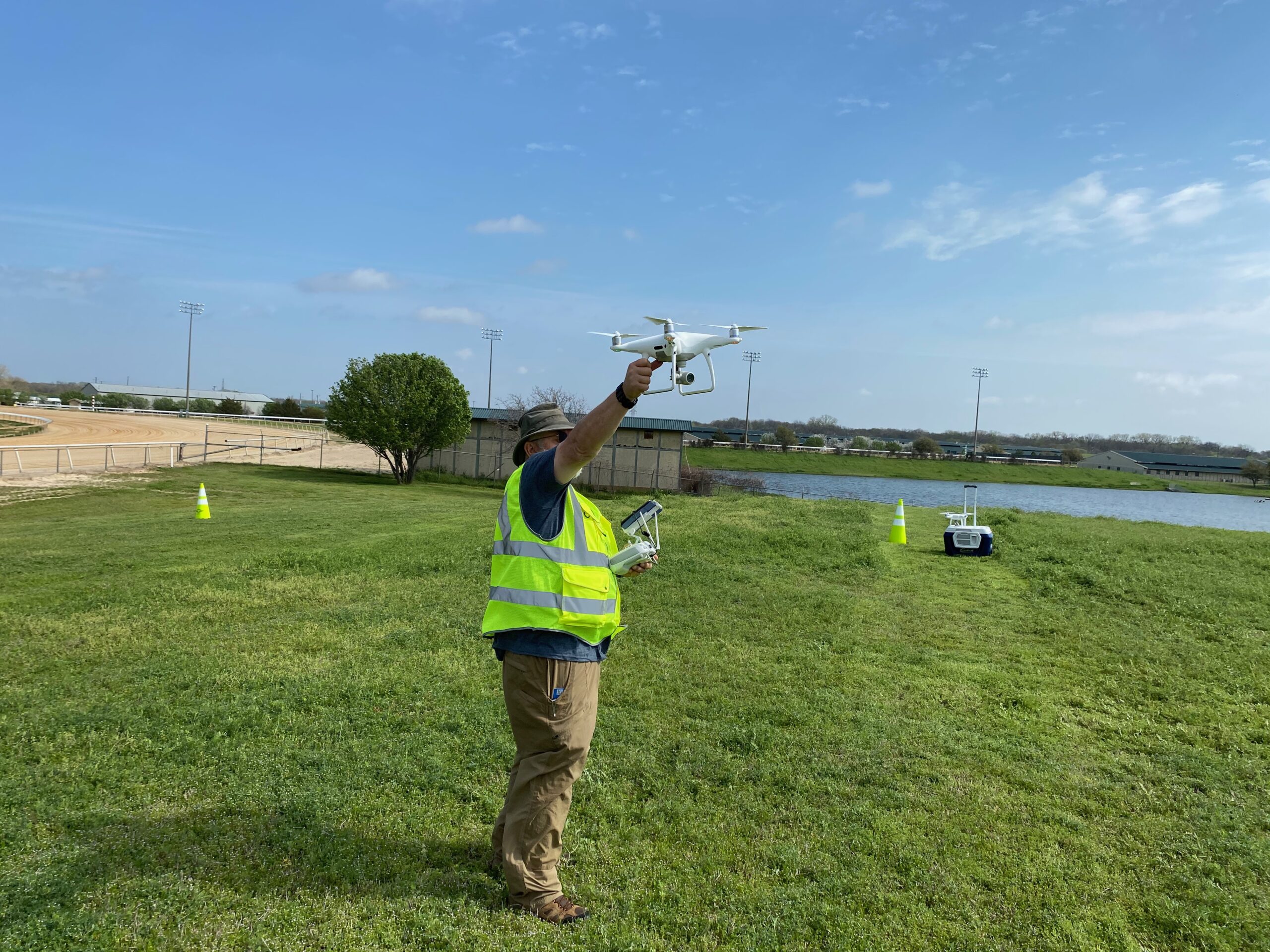In this article, we will take you on an exciting journey into the world of cinewhoops. These compact and agile drones are your passport to capturing stunning cinematic aerial shots in even the tightest spaces.
From understanding the advantages and disadvantages to selecting the right model, and factors to keep in mind before making a purchase, we have put together this guide for you.
So, get ready to explore the world of cinewhoops and take your aerial videography skills to new heights with us.
What Is Cinewhoop?

A “CineWhoop” is a type of FPV (First-Person View) drone that’s specifically designed to capture smooth cinematic footage in tight spaces and challenging environments where traditional camera drones might be too large or risky to operate.
Cinewhoops are known for their slow and stable flight characteristics, making them a valuable asset for FPV pilots. It is especially useful for capturing stunning videos in scenic locations or achieving ultra-smooth footage using an HD camera or third-party stabilization software.
Now that we have established that Cinewhoop holds significant value for FPV pilots, the question arises: Why and when should you opt for a Cinewhoop drone instead of a traditional FPV drone?
Let’s delve into this and understand this better.
How Do Cinewhoops Differ From Other FPV Drones?
 iFlight Protek25 And DJI FPV Drone | Source: 360rumors
iFlight Protek25 And DJI FPV Drone | Source: 360rumors
The main difference between Cinewhoops and traditional FPV drones typically boils down to their design and intended use.
Cinewhoop drones are specifically built for capturing cinematic footage in tight spaces. Their design focuses on maneuverability and stability, allowing them to navigate through indoor environments, narrow passages, and challenging locations with ease.
Take a look at this video where Paul provides valuable insights on cinewhoops while navigating through Isotopes Park:
With advanced stabilization systems, cinewhoop drones deliver smooth and steady shots even during dynamic flight maneuvers. This makes cinewhoops a fantastic option for capturing captivating and dramatic shots in situations where larger drones might struggle to perform effectively.
Conversely, traditional FPV drones are typically designed for high-speed racing and freestyle flying. They prioritize agility and speed, which are crucial for competitive racing and performing aerial tricks.
FPV drones are usually larger and more powerful, equipped with robust motors and propellers that enable rapid acceleration and intense flight dynamics.
While they can still capture impressive video footage, their emphasis on performance might pose challenges when trying to film in tight or constrained environments.
Here is a comparison to illustrate the differences between CineWhoop drones and general FPV drones:
| Feature/Aspect | CineWhoop Drones | General FPV Drones |
| Primary Purpose | Cinematic video capture in tight spaces | Racing, freestyle, acrobatics, exploring |
| Size | Typically around 3-inch propellers | Varies (2-inch to 7-inch or more) |
| Design | Ducted propellers for protection | Open propeller design, often more aerodynamic |
| Speed | Slower, prioritizing stable footage | Can be extremely fast for racing |
| Maneuverability | Stable and controlled movements | Agile and responsive for acrobatics |
| Camera | High-quality cinematic footage may carry external cameras like GoPro | Varies, often lower quality for pilot view, though can carry HD cams |
| Flight Characteristics | Smooth and controlled | Fast, agile, acrobatic |
| Safety Features | Ducts around propellers for added safety | Fewer protections, more exposed propellers |
| Durability in Crashes | Enhanced due to ducts, but not built for regular crashes | Often built robustly to withstand crashes during races |
| Customizability | Moderate; tweaks for video quality | High; many parts can be swapped out for racing optimization |
| Cost | Moderate to high, depending on the camera and other features | Varies widely; can be low for basic models and high for advanced racing models |
Ultimately, the choice between a Cinewhoop and a traditional FPV drone lies in the kind of content you want to produce and the environments in which you plan to fly.
It is essential to understand that the FPV category is vast and that individual drones can vary widely in terms of features and performance.
Advantages and Disadvantages of Cinewhoop Drones
| Advantages | Disadvantages |
| Can fly through tight spots like buildings or forests | Can’t stay in the air as long as larger drones. |
| Amazing flight controls and stabilization systems that smooth the video, even when flying is tricky. | Due to their small size, Cinewhoops can be more affected by wind and adverse weather conditions. |
| You can fly a Cinewhoop in first-person view (FPV), giving you the feeling of being in the pilot’s seat. | Cinewhoops might not be able to carry additional equipment like advanced gimbals or larger cameras |
| Cinewhoops are simple to carry around, set up, and fly. | They might not be suitable for all cinematic techniques or styles. |
| You can get a Cinewhoop in the air faster than bigger camera drones. | Cinewhoop cameras are good, but not as good as professional cameras, especially in low light. |
| Cinewhoops are budget-friendly, and usually cheaper to fix. | It might be tricky for newbies as flying a Cinewhoop requires practice. |
5 Best Cinewhoops of 2023
Before I tell you about the best cinewhoops available in the market, let me give you a glimpse of one of my favorites – the world’s smallest drone, the BetaFPV Pavo Pico.
Yes, you heard it right. BetaFPV Pavo Pico is the smallest Cinewhoop drone in the world.
What makes BetaFPV Pavo Pico Special?
 Pavo Pico Brushless Whoop Quadcopter | Source: BetaFPV
Pavo Pico Brushless Whoop Quadcopter | Source: BetaFPV
After undergoing thorough beta testing, BetaFPV has now officially released the smallest 2S DJI O3 Cinewhoop, Pavo Pico Brushless Whoop Quadcopter, weighing in at approximately 100g.
This ultra-lightweight cinewhoop boasts a compact wheelbase and features 45mm propellers. What sets it apart is its integration of the latest F4 2-3S 20A AIO FC V1, which significantly enhances the overall flying experience. Its split-design HD VTX mounting bracket enables quick installation of popular HD digital VTX modules.
Now here is a list of the best cinewhoop drones for you:
 Top Cinewhoop Drones
Top Cinewhoop Drones
| Cinewhoop Drone | Features |
| DJI Avata | It has a 1/2.3-inch CMOS sensor with a 120-degree FOV, EIS stabilization, and a 3-axis gimbal. It also has a built-in obstacle avoidance system and a 40-minute flight time. |
| Foxeer Foxwhoop 35 | It has a 1/2.3-inch CMOS sensor with a 120-degree FOV, but it does not have EIS stabilization. It also has a built-in obstacle avoidance system, but its flight time is only 25 minutes. |
| GEPRC CineLog 35 | It has a 1/2.3-inch CMOS sensor with a 120-degree FOV and EIS stabilization. It does not have a built-in obstacle avoidance system, but its flight time is 30 minutes. |
| BetaFPV Pavo25 Cinewhoop | It has a 1/2.5-inch CMOS sensor with a 120-degree FOV, but it does not have EIS stabilization or a built-in obstacle avoidance system. Its flight time is also only 20 minutes. |
| Speedybee Flex 25 | It has a 1/2.3-inch CMOS sensor with a 120-degree FOV, but it does not have EIS stabilization or a built-in obstacle avoidance system. Its flight time is also only 20 minutes. |
Important Factors to Consider Before Buying a Cinewhoop
 DJI Avata Accessories
DJI Avata Accessories
Here’s the list of factors to think about before buying a Cinewhoop drone:
Your Flying Experience
Cinewhoops can be trickier to fly, especially if you’re new to FPV. Think about how experienced you are with flying drones before you decide.
Your Budget
Figure out how much money you’re willing to spend on the Cinewhoop. Remember to include extra costs like spare parts, batteries, and other stuff you might need.
Why You Want It
Decide what you’re going to use your Cinewhoop for. Do you want to film indoors, outdoors, or both? This will help you choose the right features.
Camera Compatibility
Some Cinewhoops work only with specific cameras, like GoPros. Check if the drone can handle the camera you want to use.
Video Quality
Consider how good you want your videos to look. While Cinewhoop cameras are good, they might not be as awesome as more expensive drones or professional cameras.
Time in the Air
Look at how long the drone can stay in the air on one battery charge. Longer flying time is helpful if you want to capture lots of footage.
How Far It Can Fly
Check the drone’s flight range, which tells you how far it can fly from your controller. Remember, Cinewhoops usually work best at shorter ranges.
Getting Spare Parts
Find out if you can easily get replacement parts for the Cinewhoop you’re considering. Being able to fix your drone is a big deal.
Considering these things carefully can help you make a smart choice and get a Cinewhoop drone that fits your needs and wants.
FAQs Related to CineWhoops
Are CineWhoops safe to fly indoors?
CineWhoops are one of the most suitable types of drones for indoor flight due to their protective ducts and stable flight characteristics. However, caution should still be exercised.
Click here to learn more about the drone laws in the USA
What type of camera can I mount on a CineWhoop?
Many CineWhoops are designed to carry small action cameras like GoPros. The exact model or type of camera would depend on the CineWhoop’s size and payload capacity.
Can I use a CineWhoop for racing?
While possible, CineWhoops aren’t designed for racing. Their primary goal is stable footage, and they often lack the speed and agility of dedicated racing drones.
How Can I Learn to Fly a Cinewhoop?
Learning to fly a Cinewhoop involves practicing FPV flying skills. You can start by using FPV simulators to practice before taking your drone into the air.
Drone U’s online resources and tutorials can help you get started.






Add Your Comment